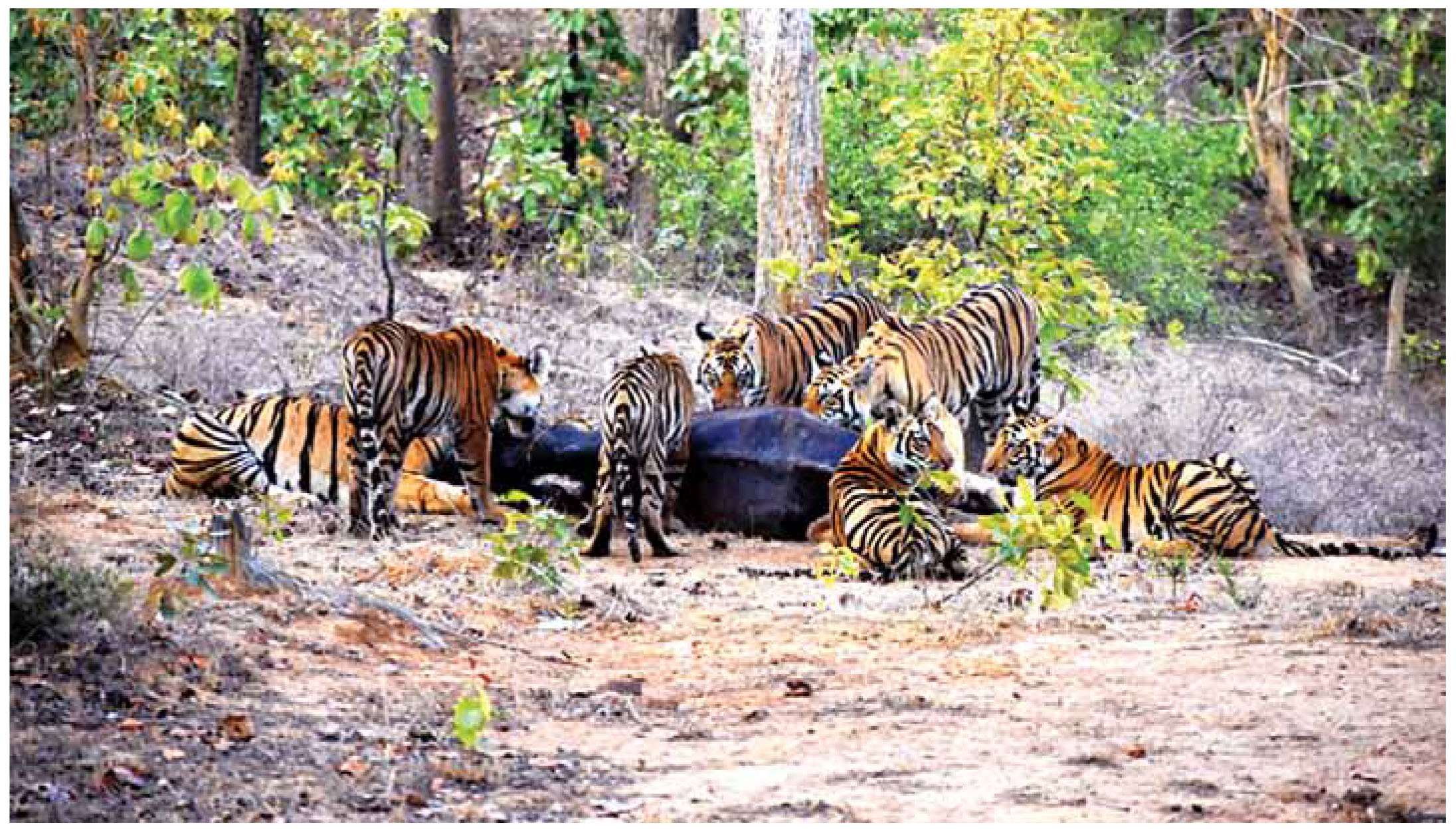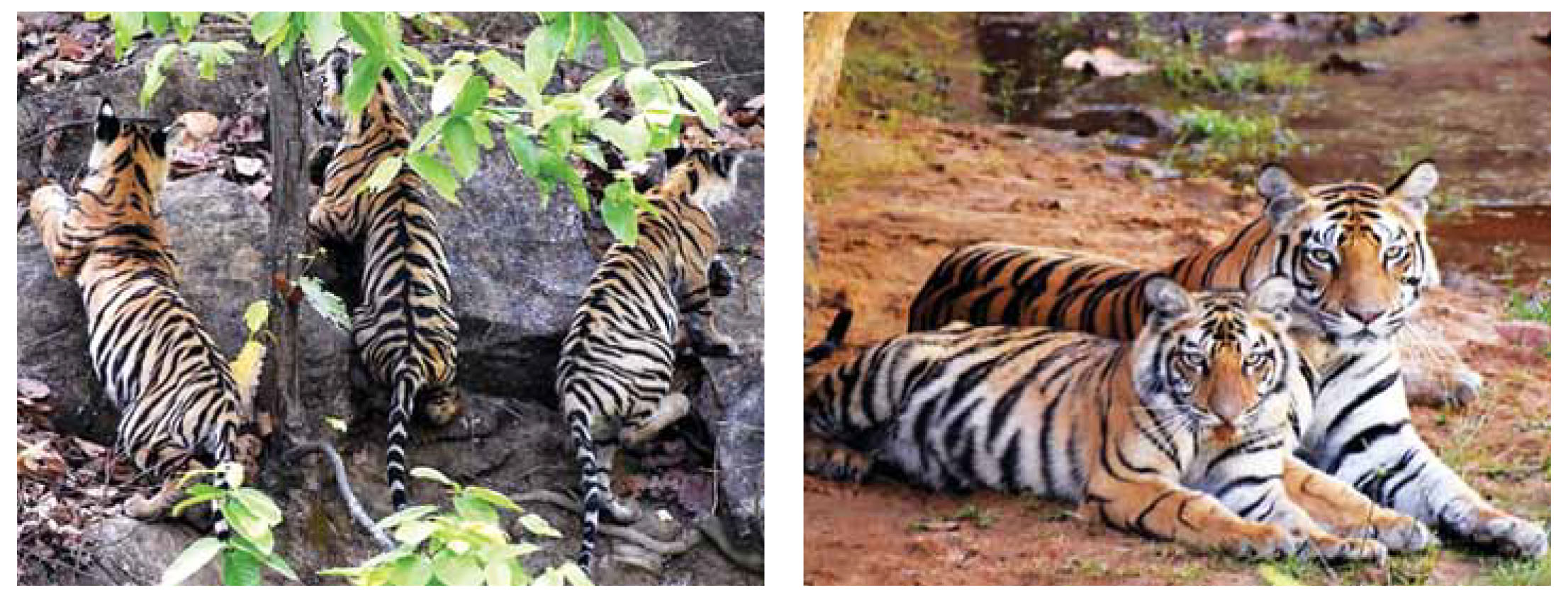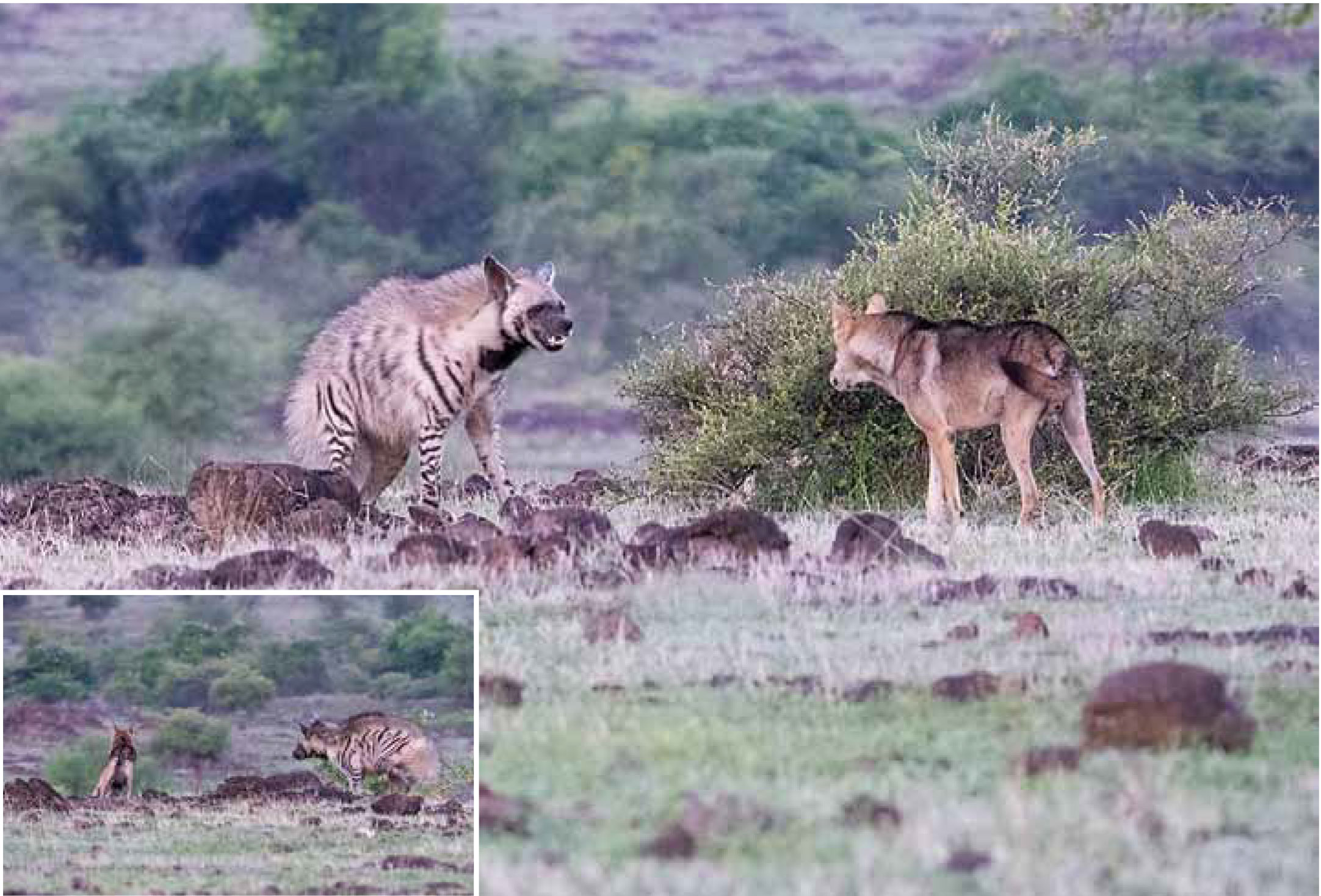
Finally Nature triumphs… Story of a mother from the wild
By Hari Om, IFS
Sanjay Tiger Reserve is a pristine protected forest situated in Sidhi District of Madhya Pradesh. Historically, it has been the birth place of majestic white tigers and was home to significant tiger population. Lack of focused conservation policy during British Raj led to wiping out of tiger population in this region.
Post independence, enactment of Wildlife Protection Act in 1972 and implementation of Project Tiger finally gave the much needed hope of bringing back the glory of the majestic tiger population in this region. With incremental conservation efforts, presently this tiger reserve is home to forty one (41) tigers including twenty two (22) adults and nineteen (19) cubs. But this number is still not close to what this region can sustainably support. Therefore, saving every tiger has been a top priority of tiger reserve management.
In this context, losing any one of them has immense detrimental effect to the conservation efforts in the Tiger Reserve. On intervening night of 16th and 17th March last year, we received information that a tiger is lying injured near the railway track that passes through one of the core ranges of the tiger reserve. On reaching the spot, it was found that she is a mother tigress with four cubs of 8 to 9 months age. She was hit by a train from behind resulting in severe injury to her spine. We rescued her from the accident site and a team of veterinarian doctors was deployed for her care. We had hope that she would recover from this injury but fate had different plans. Next evening, she succumbed due to severe internal bleeding leaving behind her four cubs who were perhaps still not aware of their mother’s death.
The tigress along with her four cubs was a common sighting for tiger reserve officials as well as tourists. For a tiger reserve which is still not supporting its full potential of tigers, this news of death of a breeding tigress meant a huge loss. Next challenge before us was to ensure survival of her four cubs. They were still very young to hunt for food on their own. The loss of protective sheath of their mother meant their lives were at continuous risk in the wild. Imagining the similar situation for us, it was akin to orphaned children left to fend for themselves without care and protection of their mother. This situation meant possible loss of all four cubs if suitable management intervention were not taken in time.

This situation presented a unique dilemma for us. There were two possible options. First option was to tranquilize and capture the cubs and place them in an enclosure till they become adult. Second option was to keep them in wild in their present habitat and continuously monitor them. The four cubs had made a marshy lake their home since their birth. It was a perfect home with 6-7 feet grass for cover and suitable water availability. Further, presence of 4 cubs together is a very difficult situation for tranquilization. These factors combined along with suggestions from senior officials, decision was taken to observe and monitor the cubs for a month. We felt that nature’s own hand would sort out things and cubs would chart their own path in the wild. In case of any exigencies, first option was to be taken.
A team of frontline staff headed by a senior tiger reserve official was constituted to ensure well being and monitoring of the four cubs. They began their work from the very next day. Initially, for first six days everything was running as per the plan. The four cubs were sighted and reported daily. They were healthy and showing behavior as per our expectations.
Unfortunately on the morning of 24th March22, one of cubs died in infighting with another adult tiger. This posed a fresh challenge before us. We still couldn’t resort to first option as tranquilization was still extremely difficult. Intense monitoring of remaining three orphaned cubs continued for next three weeks.
They were healthy and stable. In last week of April 2022, the three orphaned cubs were not seen by monitoring team for two consecutive days. Our team minutely searched for them but even after three continuous days of searching, they still remained elusive. Such information is often followed by unfortunate news. With diminished hopes, the team was returning to its base when they witnessed a miracle which none of us present there would ever forget in our lives. On the road connecting Forest Rest House to human habitations outside the park, we saw a group of seven tigers. At the outset, it seemed a group of one adult tigress and six cubs. The cubs had two groups, one group of three aged between 8-9 months and second group of three aged between 6-7 months. The first group matched with what we have been looking for a week. We confirmed it with our database and found that Tigress was another resident tigress of park with three cubs of her own and other three cubs were of her sister who died on 17th March22 in a train accident.
This was a very rare incident when it comes to wildlife management. Tigers are generally territorial, therefore, being a foster mother for her sister’s orphaned cubs meant additional burden for mother tigress. We also thought that this may be a one off incident. But as the monitoring continued, the seven tigers were always seen together. Continuous monitoring gave us unique insights to the motherhood amongst the most majestic species in the wild. The orphaned cubs being deprived of motherly love and affection after their own mother’s death were often seen warming up to their ‘new’ mother. They shared the same bonhomie with the three younger cubs that they shared amongst themselves. Mother tigress gave equal affection to her ‘new’ set of cubs. In fact, she seemed mindful of giving equal affection and care to her both sets of cubs. Her gentleness and embracing nature were seen frequently by monitoring team. As the orphaned cubs were relatively older than her own cubs, she first started taking the orphaned cubs on food searching and hunting sprees. She taught them every rule of skillful hunting to prepare them for the wild world.
It has been four months since they have been united. It’s quite a beautiful sight to see 7 tigers together. Watching these majestic beautiful tigers together unites our soul with Mother Nature. We have been witness to change of behavior of a fierce tigress from an aggressive to warm tenderness of motherhood.
Somehow, in this process of nature, we played our own little role with joy and satisfaction.



